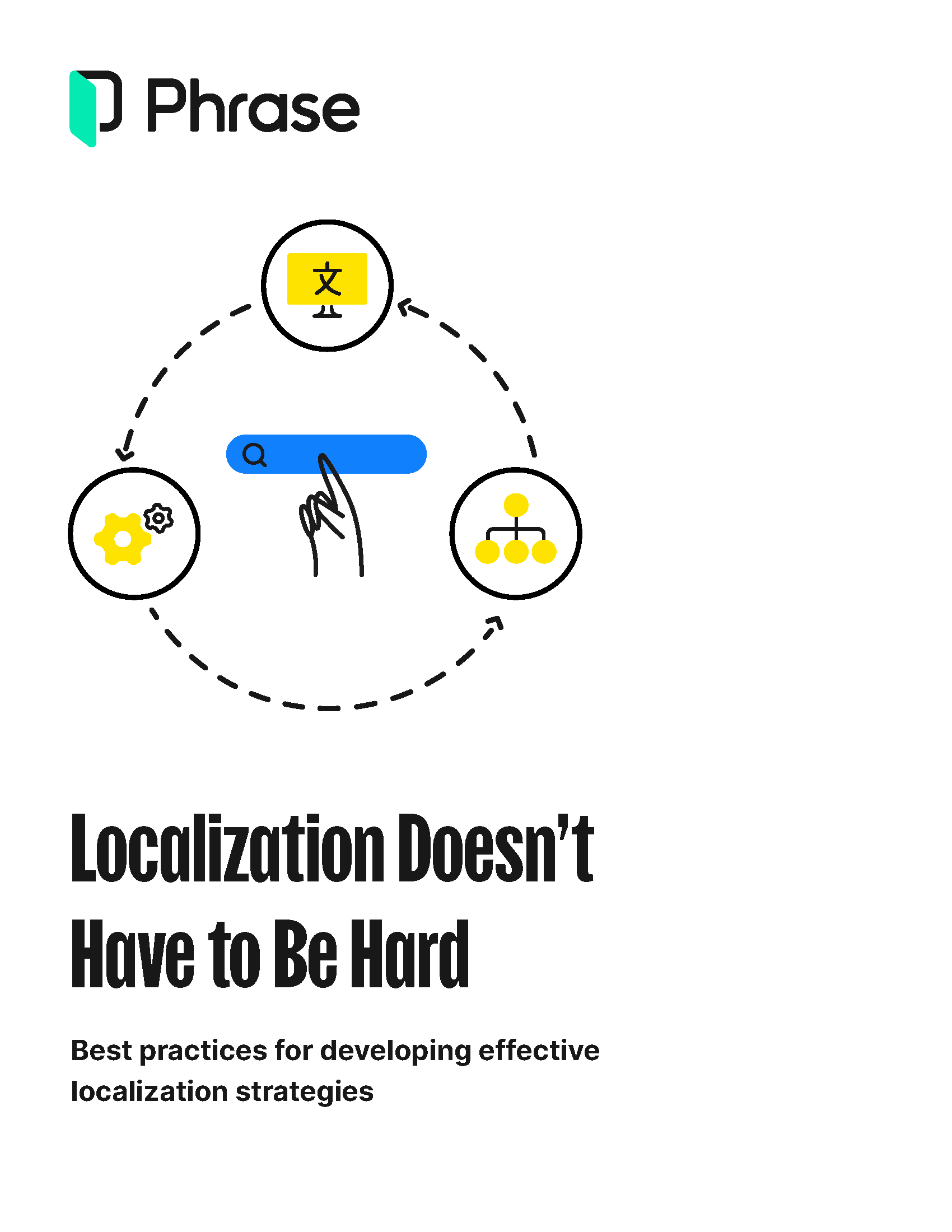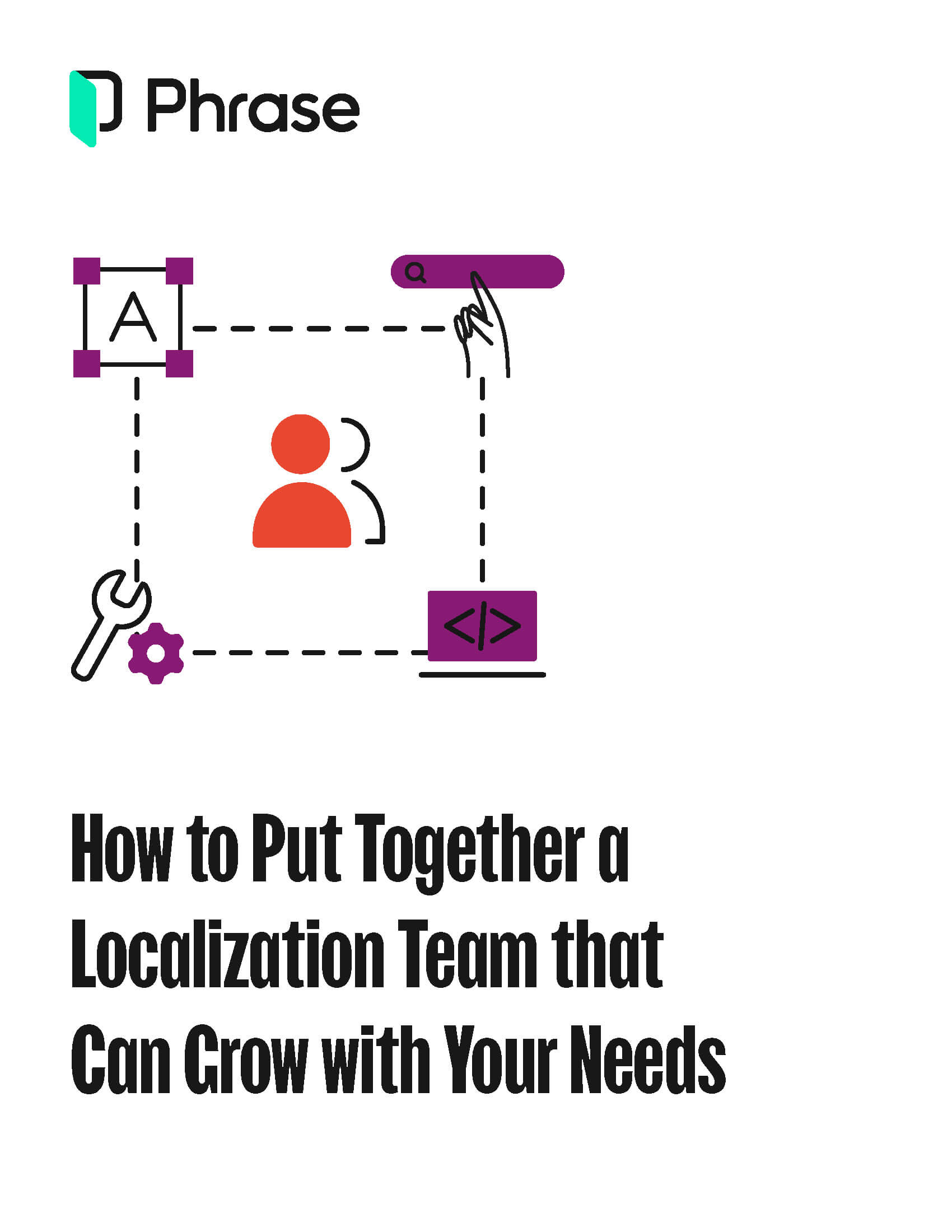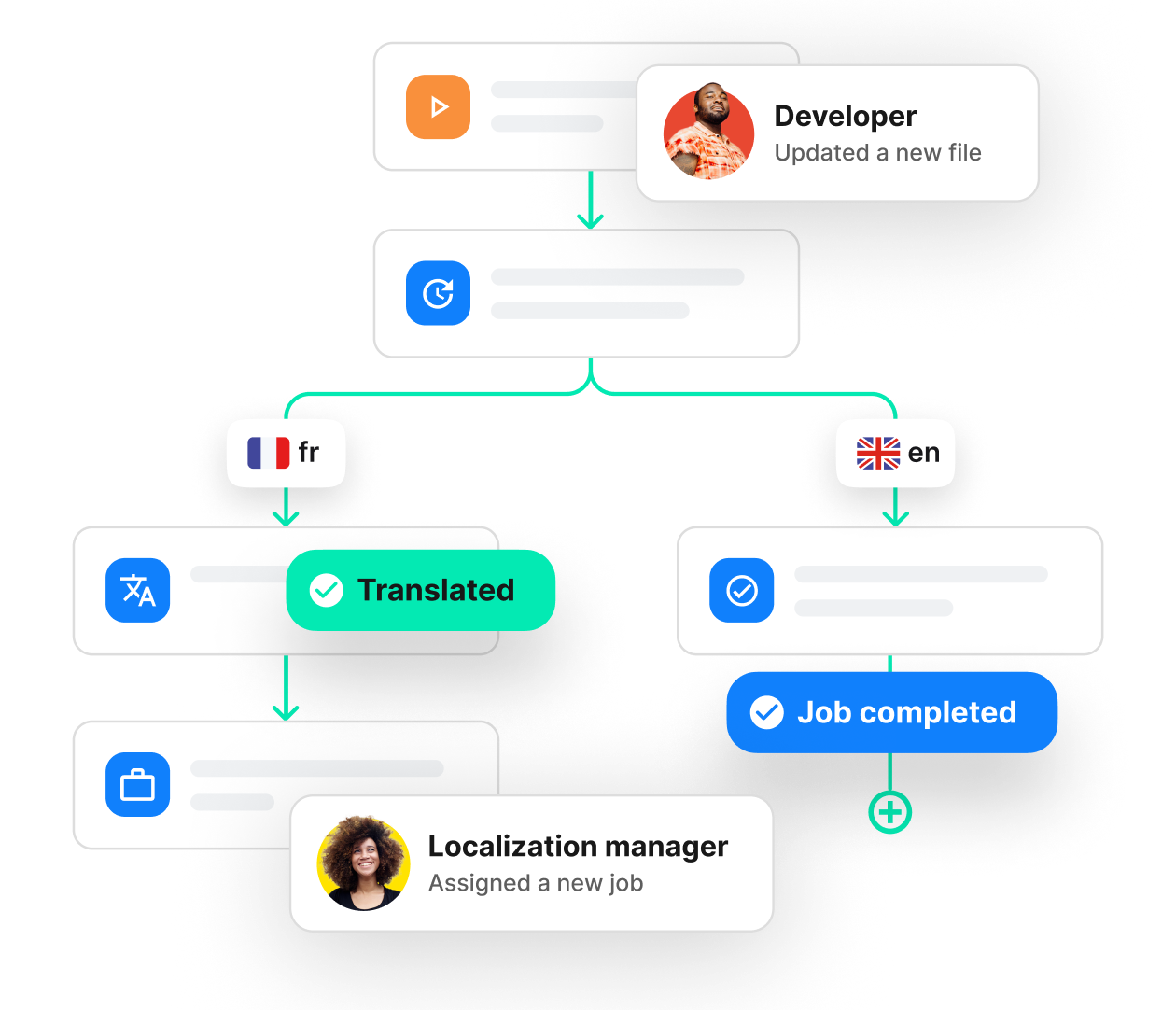Localization strategy
Technology Is Your Ally: Accelerating Manufacturing Growth with Effective Localization Management

The digital transformation in the manufacturing industry is steadily prompting companies to invest in new technology for greater efficiency and productivity. According to a Deloitte study, 86% of manufacturing executives foresee smart factory solutions as the key driver of competitiveness in the next 5 years.
Translation and localization are no exceptions. As more manufacturers seek to expand globally, automated, customized, and data-driven localization workflows become even more crucial in enabling brands to connect with international customers, drive engagement, and improve conversion rates.
Localization managers lead this charge, skillfully balancing speed, scope, costs, and quality to transform localization into a growth driver. Maximizing localization becomes particularly formidable when processes, data, and tools operate in silos.
The good news is that others have successfully overcome silos by adopting a purpose-driven, data-powered localization program with a technology suite capable of orchestrating every aspect of the multilingual content management cycle—and you can do the same. Keep reading to discover how.

Unlock global business with the Phrase Localization Platform
Expand into new markets with all the tools you need in one technology suite for high-quality, fast, and scalable localization.
The impact of globalization on the manufacturing industry
Globalization has made a remarkable impact on the manufacturing scene, bringing about profound transformations in global operations. With a larger customer base within reach, manufacturers are now tailoring their products to the needs and preferences of a more diverse global audience.
Facilitating the exchange of ideas, technology, and best practices among manufacturers worldwide, globalization has led to advancements in:
- Product design
- Manufacturing processes
- Safety standards
- Sustainable technologies
- Operational and supply-chain efficiency, etc.
The outcome is an ever-changing landscape, requiring manufacturers to maintain agility to sustain competitiveness. When you factor in the regulatory and trade complexities associated with a global presence, the manufacturing environment becomes exceptionally intricate.

Free download
Best practices for developing effective localization strategies
Explore how to tackle localization management efficiently and engage customers across the globe in their native languages and local experiences.
Operational complexities in localization management
While localization is one of the most powerful enablers for global growth, its execution requires taking into account various operational complexities.
Multiple workflows across disconnected tools
One significant challenge lies in maintaining multiple workflows for different products and content in siloed, disconnected tools both across and outside the enterprise. Ensuring consistency and streamlining processes can be a demanding endeavor when each type of content follows its workflow on a separate platform.
Some examples of disconnected content could include production schematics, operational manuals, service portfolios, safety documentation, or manufacturing software. Additionally, language service providers (LSPs) could also have distinct platforms and workflows. In contrast with this common reality, content and workflows benefit from a unified, collaborative approach.
The absence of a centralized platform for storing multilingual content with version control can lead to duplicated efforts, fragmented workflows, and inefficient use of resources. Additionally, ensuring the quality and consistency of localized products and tracking localization progress across diverse projects becomes challenging without an integrated view.
Without an integrated approach to localization, companies waste time and money, struggle with quality control and consistency, and risk compromising their global brand image.
Balancing speed, scope, costs, and quality
Another complexity arises from the triple constraint of localization management that encompasses speed, scope, and costs. Manufacturers must deliver high-quality localized content quickly and efficiently, ensuring the scope of localization remains manageable in terms of the volume of content and the number of languages involved.
Simultaneously, they must operate within budget constraints by optimizing costs without compromising quality or speed. These competing objectives can create a challenging balancing act for localization managers. Failure to maintain equilibrium among these elements can severely impact the bottom line, which doesn’t help the perception of localization as a cost center that localization managers fight so hard to change.
Lack of recognition and alignment
Finally, one major hurdle many manufacturing businesses deal with is the inadequate acknowledgment and integration of localization efforts with the overall goals of different teams, including product, engineering, support, and marketing—creating a lack of visibility that hinders potential synergy and collaboration opportunities.
Localization managers consistently grapple with the task of highlighting their contributions beyond perception as mere project managers focused on translations. Despite their efforts to shift this view of localization as a “necessary evil” to a growth catalyst, the undervaluation of their role often leads to the business overlooking the actual impact of localization, and localization teams struggle to secure a seat at the table.
When localization remains isolated within a silo, detached from the broader organization, and viewed solely as a cost center, the potential value for the entire business becomes limited.

Free download
How to choose the right people for your localization team
Discover the secrets to putting together the right team members to take your localization program to new heights.
Building blocks of an effective localization plan
Addressing the challenges highlighted earlier requires taking a proactive approach—consistently exploring ways to enhance your localization program. A clearly outlined localization plan, taking into account goals, workflows, and technology, acts as a blueprint for success. Let’s delve deeper into the 3 essential components of a successful manufacturing localization roadmap.
Create a centralized localization ecosystem
Aligning stakeholders, reducing human error, and increasing efficiency require more than automating processes—it calls for a centralized localization ecosystem where any and all localization activity across the organization converges seamlessly.
In other words, automation must be accompanied by integration and ease of management. The more tightly integrated all localization efforts are, the easier it becomes to enhance efficiency, optimize costs, and ensure consistency.
With a fully integrated cloud-based platform designed to connect, automate, and manage complex localization workflows—such as the Phrase Localization Platform—localization managers can’t only revolutionize workflows but also embed value-adding processes throughout the business.
This integrated approach isn’t just about adapting to new software—it’s about optimizing the entire ecosystem where multilingual content flows, ensuring a streamlined, effective journey from creation to deployment.

Adapt team-specific playbooks and automated workflows
Establishing internal processes for each team engaged in the localization process is crucial for ensuring alignment, building trust, and fostering collaboration. A set of best practices, tailored to the unique needs of each team and communicated in a language that resonates with them, can greatly contribute to achieving these objectives.
A well-rounded localization playbook for each team should ideally feature:
- Collaboration, communication, and process flow guidelines
- Relevant resources including local market guides, style guides, and glossaries
- Adopted best practices (e.g, how to write localization-friendly copy)
- KPIs and metrics specific to each team (e.g., on-time delivery rates for the sales, website bounce rates for the marketing, and customer satisfaction rates for the support team)
- Shared metrics for informed localization decisions (e.g., crafting engaging CTAs in each target language can help the marketing team achieve better newsletter click-through rates).
With these playbooks established, you have the foundation to construct automated end-to-end localization workflows that seamlessly integrate with every facet of your company’s unique needs. Phrase Orchestrator, a comprehensive and fully customizable solution, empowers you to build precise workflows tailored to your requirements, leveraging the full functionality of the Phrase Localization Platform.
Phrase Orchestrator is an all-around, flexible automation solution that connects the different parts of the localization chain. By allowing you to streamline complex localization workflows through a single user-friendly interface, it eliminates the need for workarounds and manual, time-consuming processes, leading to:
- Improved operational efficiency and productivity with enhanced visibility throughout
- Enhanced cross-functional alignment, eliminating potential bottlenecks early on
- Breaking down data silos and making better-informed decisions
- More effective resource allocation

Phrase Orchestrator
Cutting-edge workflow automation editor
Easily create automated workflows, connecting all products across the Phrase Suite, for unparalleled speed and control in your localization process.
Establish a performance measurement system with advanced analytics
The insufficient recognition of localization’s strategic role often stems from the lack of visibility into the impact of localization efforts. To tie localization performance metrics to business outcomes—which helps in the quest for alignment with the rest of the organization—you need reliable data and insights.
With Advanced Analytics—part of Phrase Analytics—localization managers get a powerful set of data-driven insights into their localization program’s performance. Having data at their fingertips enables them to make informed decisions, optimize processes, and demonstrate the value of localization to stakeholders.
By unifying relevant KPIs and metrics in one place and leveraging self-service reporting, localization managers can easily uncover the patterns and correlations between localization performance and business results:
- Optimize costs with insights into words processed per project or provider, and which language pairs have the highest word count.
- Improve workflows by tracking the number of on-time deliveries, average job duration, and editing time per workflow step.
Take control of translation quality across their organization with reports on Language Quality Assessment, which evaluates scores by category, error severity, language pairs, and providers.

Phrase Analytics
Unleash the power of data-driven decision-making
Create custom reports from one simple and intuitive platform to optimize translation workflows and drive smart business decisions that enable growth.
You can expand the boundaries of localization
The manufacturing industry is navigating a complex landscape shaped by globalization, the need to cater to local needs, and the convergence of technology. Localization complexities, including disconnected tools, balancing efficient management and quality, and a lack of recognition, can seriously impede growth.
Through centralized localization ecosystems, automated workflows, and data-driven analytics, localization can realize its full potential as a business-critical asset—and with a technology partner like Phrase, integrating all solutions needed to cover every aspect of the localization life cycle, localization managers can finally have the peace of mind that they are driving growth.
Speak with an expert
Want to learn how our solutions can help you unlock global opportunity? We’d be happy to show you around the Phrase Localization Platform and answer any questions you may have.






